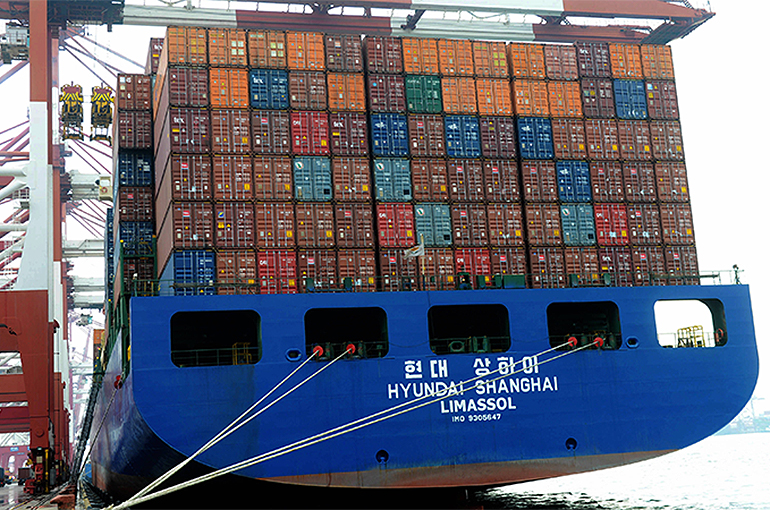 South Korea Has First Trade Deficit With China in 31 Years
South Korea Has First Trade Deficit With China in 31 Years(Yicai) Jan. 15 -- South Korea has posted a trade deficit with China for the first time in 31 years, mainly because of China's increasing manufacturing competitiveness and growing self-sufficiency in intermediate materials.
The trade deficit reached USD18 billion as of last November, according to data from the Korean Ministry of Trade, Industry and Energy.
Since the establishment of diplomatic relations between the two countries in 1992, except for a trade deficit of USD1 billion that same year, South Korea has consistently logged trade surpluses, peaking at USD62.8 billion in 2013 but falling to only USD1.2 billion in 2022.
“South Korean industry generally believes that the trade deficit with China is not reversible in the short term and is likely to gradually expand,” according to Huang Fei, a professor at the Seoul School of Integrated Sciences and Technologies.
Chinese companies are advancing in the cosmetics, liquid crystal display, smartphone, and electric vehicle sectors, all areas where South Korea had a competitive advantage in the past, Huang said.
Though China continued to import, process, and assemble intermediate materials from South Korea after 1992, it quickly caught up with its neighbor and strengthened its manufacturing competitiveness, thereby reducing its reliance on intermediate materials from South Korea, Huang said.
South Korea also failed to recognize the market's rapid growth and changes, leading to a decline in export competitiveness, she pointed out.
Due to China’s heightened manufacturing competitiveness and greater self-sufficiency in intermediate materials, competition has even emerged in high-tech industries, where South Korea and China used to cooperate. South Korea depends heavily on China for core materials used in electric car batteries, with a more than USD10 billion deficit last year in power batteries and lithium hydroxide.
Many popular South Korean exports to China have also been adversely impacted by China-US supply chain conflict and the South Korean government's previous attitude towards China, Huang noted.
“Korean products have gradually lost consumers' attention and favor in China, but the inevitable trend of higher imports of raw materials and resources from China to South Korea still exists,” Huang added. “The increased dependence of Korean industry on Chinese imports has further intensified the trade imbalance.”
Editor: Martin Kadiev